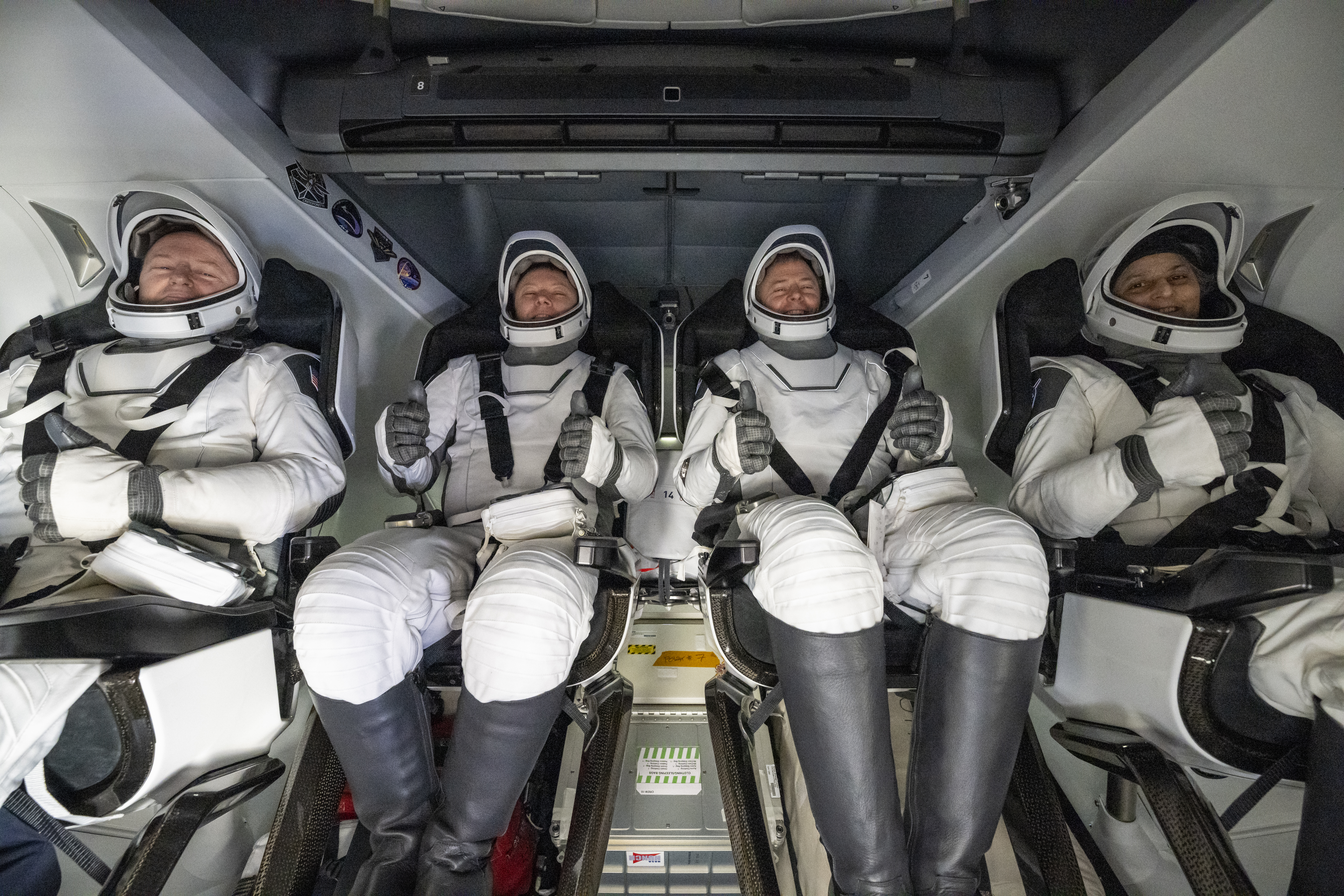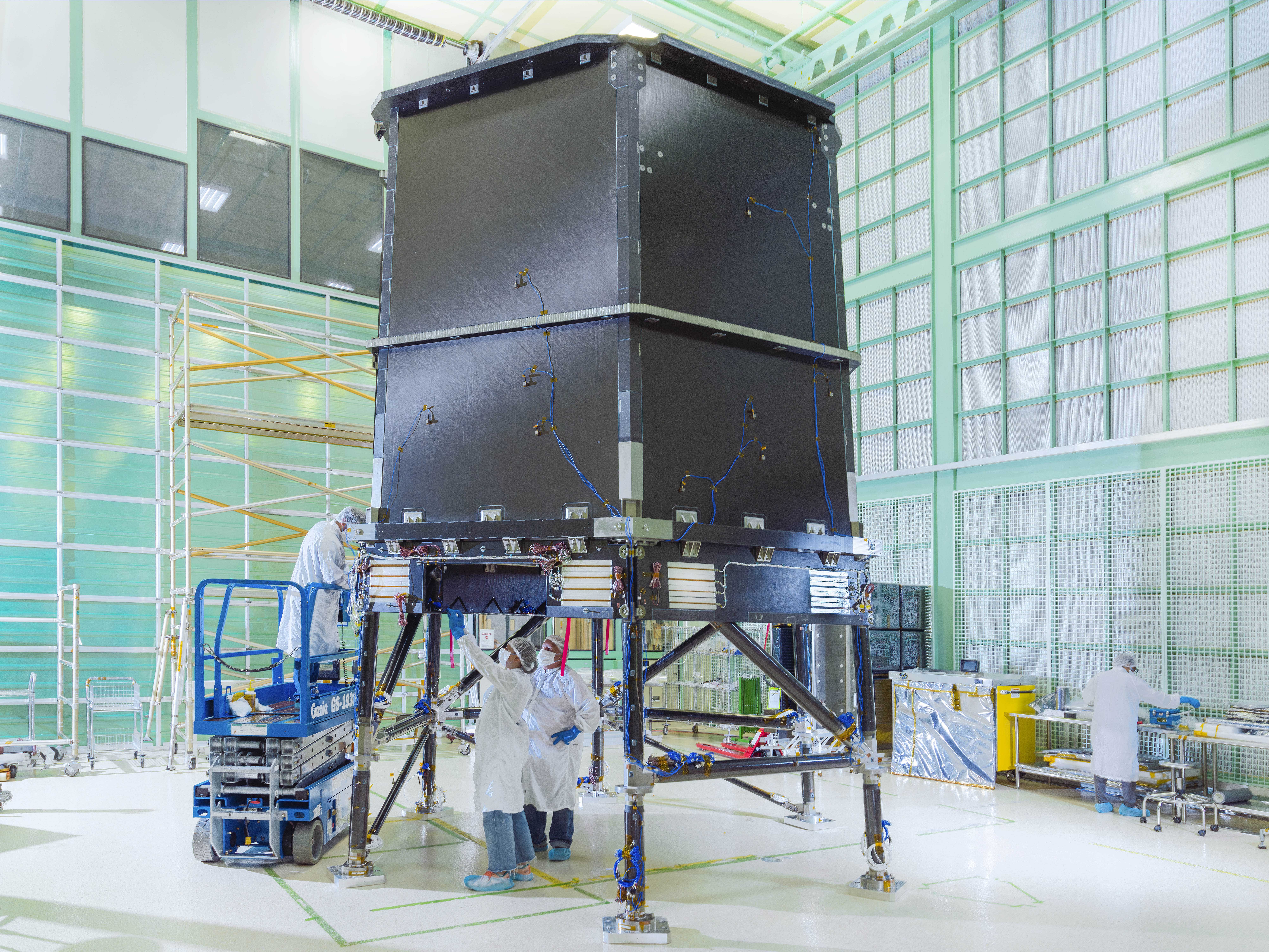NASA’s Nancy Grace Roman Space Telescope: A Crucial Component Undergoes Testing
A significant milestone has been achieved in the development of NASA’s Nancy Grace Roman Space Telescope, as one of its essential components recently underwent rigorous testing. This component, known as the Outer Barrel Assembly, is instrumental in maintaining a stable temperature for the telescope and shielding it from unwanted light. The successful testing of this component took place at NASA’s Goddard Space Flight Center in Greenbelt, Maryland, marking a crucial step in the telescope’s journey towards its anticipated launch.
The Spin Test: A Crucial Evaluation
The testing of the Outer Barrel Assembly involved spinning it in a sophisticated test chamber, resembling a large round room. At the heart of this chamber, a massive steel arm, weighing an impressive 600,000 pounds (or 272,000 kilograms), extends from a giant rotating bearing embedded in the floor. This setup is akin to a high-tech version of a carnival ride, designed to apply centrifugal force to its subject—in this case, the outer covering of the Roman telescope.
During the test, the assembly was spun at a rate of 18.4 rotations per minute. While this might seem modest, it generated a force equivalent to over seven times Earth’s gravity, or 7 g, propelling the assembly at a speed of 80 miles per hour. Such rigorous testing ensures that the component can withstand the extreme conditions it will encounter in space.
A Strategic Approach to Testing
Due to the size of the Outer Barrel Assembly, it was impossible to test the entire structure in one piece. Jay Parker, the product design lead for the assembly at Goddard, explained that the assembly is too large to fit in the test chamber. Standing at about 17 feet (approximately 5 meters) tall and 13.5 feet (roughly 4 meters) wide, the assembly is designed somewhat like a house on stilts. Consequently, the testing was divided into two parts: the "stilts" and the "house."
The "stilts," technically referred to as the elephant stand, were tested first. This part of the assembly, resembling scaffolding, is designed to encase the telescope’s Wide Field Instrument and Coronagraph Instrument. It connects the upper portion of the Outer Barrel Assembly to the spacecraft bus, which will maneuver the observatory to its designated position in space and support it while there. During the test, weights were attached to the elephant stand to simulate the rest of the assembly’s mass.
Following this, the "house" portion, comprising the shell and a connecting ring that encircle the telescope, underwent testing. These components will eventually be equipped with heaters to prevent the telescope’s mirrors from experiencing significant temperature fluctuations.
Material Innovation for Space Exploration
To ensure the Outer Barrel Assembly can withstand the harsh conditions of space, it is primarily constructed from two types of carbon fibers mixed with reinforced plastic, connected with titanium end fittings. This combination of materials is both stiff, preventing warping or flexing during temperature changes, and lightweight, which reduces the demands of launching it into space.
An additional weight-reducing measure involves the interior of the upper portion, or the "house’s siding," being structured like a honeycomb. This pattern is renowned for its strength while minimizing weight by hollowing out parts of the interior.
From Design to Integration
The Outer Barrel Assembly was designed at NASA’s Goddard Space Flight Center and manufactured by Applied Composites in Los Alamitos, California. Delivered in parts, the assembly was pieced together through a series of crane lifts in Goddard’s largest clean room. After partial disassembly for the centrifuge testing, the assembly will now be reassembled and integrated with Roman’s solar panels and Deployable Aperture Cover by the end of the year.
Future Testing and Integration
In 2025, the newly integrated components will undergo thermal vacuum testing to ensure they can endure the temperature and pressure conditions of space. Following this, they will be subjected to a shake test to confirm their resilience against the vibrations experienced during launch. Towards the end of next year, these components will be integrated with the rest of the observatory.
A Glimpse into the Future
The Nancy Grace Roman Space Telescope is managed by NASA’s Goddard Space Flight Center, with contributions from NASA’s Jet Propulsion Laboratory and Caltech/IPAC in Southern California, the Space Telescope Science Institute in Baltimore, and a science team comprising researchers from various institutions. The primary industrial partners involved in this project are BAE Systems, Inc in Boulder, Colorado; L3Harris Technologies in Rochester, New York; and Teledyne Scientific & Imaging in Thousand Oaks, California.
For those interested in exploring the telescope further, NASA offers an interactive virtual tour available at https://roman.gsfc.nasa.gov/interactive.
Reflection on the Importance of Testing
The testing of the Outer Barrel Assembly underscores the meticulous planning and rigorous evaluation that goes into preparing NASA’s space missions. Such testing ensures the reliability and durability of components that will operate in the unforgiving environment of space. It’s a reminder of the intricate engineering and collaborative efforts required to advance our understanding of the universe.
As we look forward to the launch of the Nancy Grace Roman Space Telescope, the successful testing of its components brings us one step closer to uncovering new insights about the cosmos. The telescope’s mission promises to expand our knowledge of distant galaxies and contribute to our understanding of the universe’s evolution.
This achievement is a testament to the dedication and expertise of the teams involved in the development of the telescope. Their work not only paves the way for future space exploration but also inspires us to continue pushing the boundaries of scientific discovery.
For more Information, Refer to this article.


































